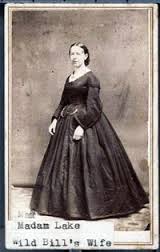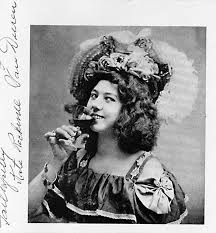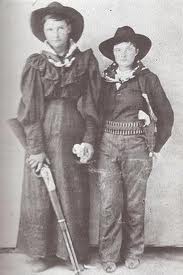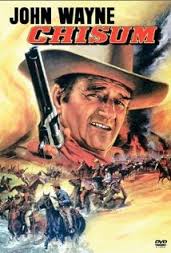1879 – William F. Cody publishes his autobiography, “The Life of Hon. William F. Cody.”
Here Come the Brides
Only two more days left! Enter now to win two books! Tales Behind the Tombstones: The Deaths and Burials of the Old West’s Most Nefarious Outlaws, Notorious Women, and Celebrated Lawmen and the new book More Tales Behind the Tombstones: More Deaths and Burials of the Old West’s Most Nefarious Outlaws, Notorious Women, and Celebrated Lawmen.
When pioneer and businessman Asa Mercer died on August 10, 1917, in Buffalo, Wyoming, few in the ranching community recalled the plan he devised to remedy the lack of single women in the Northwest in the 1860s.
It began with an ad placed in February 24, 1860, that testified to the serious shortage of a desired commodity in Washington Territory. “Attention Bachelors: Believing that our only chance for the realization of the benefits and early attainments of matrimonial alliances depends on the arrival in our midst of a number of the fair sex from the Atlantic States, and that, to bring about such and arrival a united effort and action are called for on our part, we respectfully request a full attendance of all eligible and sincerely desirous bachelors of this community assemble on Tuesday evening next February 28, in Delim and Shorey’s building, to devise ways and means to secure this much-needed and desirable emigration to our shores.”
Signed by nine leading citizens, the advertisement was picked up by other newspapers and reprinted across the country. They had hopes of attracting industrious, young women to the rich and rugged Northwest where a few thousand men were working on making fortunes in timber, fishing, farming, and other endeavors. There were a few favorable responses to the announcement but no solid plan was in place to import the desired commodity to the area.
By 1860, the pioneers in Washington Territory had established thriving communities along Puget Sound and were busy carving out farms and ranches along the coast and toward the foothills of the Cascades. The temperature climate, rich fisheries, and timber resourced proved the raw material upon which to build a comfortable life. The prosperous and clean-living young men populating the region in 1858 were “eager to put their necks in the matrimonial noose.”
In 1860, Asa Shinn Mercer hit upon a scheme to take the next step in the recruitment effort. He would import bachelorettes by traveling to the East Coast, where women were in abundance, and actively promote the unequaled advantages of Washington Territory. That idea and its sequel were part of the fascinating career of A. S. Mercer, who found his own bride among those he recruited for Washington Territory.
To learn more about Asa Mercer and others like him who left their mark on the American West read Tales Behind the Tombstones: The Deaths and Burials of the Old West’s Most Nefarious Outlaws, Notorious Women, and Celebrated Lawmen and More Tales Behind the Tombstones: More Deaths and Burials of the Old West’s Most Nefarious Outlaws, Notorious Women, and Celebrated Lawmen.
This Day…
The Real Mrs. Hickok
Time is running out! Enter now to win two books! Tales Behind the Tombstones: The Deaths and Burials of the Old West’s Most Nefarious Outlaws, Notorious Women, and Celebrated Lawmen and the new book More Tales Behind the Tombstones: More Deaths and Burials of the Old West’s Most Nefarious Outlaws, Notorious Women, and Celebrated Lawmen.
Wild Bill Hickok had many female admirers in his lifetime, but Agnes Lake Thatcher was the only woman who completely captured his heart. The man known as the “deadliest pistolero in the Old West” often declared to his friends that he preferred being a bachelor. It was a surprise to many when he married a widow several years older than himself. The circumstances that resulted in so great a change were romantically singular and worthy of record.
Mrs. Hickok was born Agnes Louise Messman on August 23, 1826, in Doehm, Alsace, France. Her mother died when she was four years old, and, shortly thereafter, her father took Agnes to America. The Messmans settled in Cincinnati, Ohio, when she was sixteen years old. As a child Agnes was an avid horseback rider. Her father helped mold her remarkable skill into a circus routine. In 1841, Agnes met a circus clown named William Lake Thatcher. He was a native New Yorker and used his connections to secure a job for Agnes with the circus he worked for, the Spaulding and Rogers Circus.
In addition to her impressive equestrian abilities, she also performed daring feats of skill on a tight wire. The August 23, 1907, edition of the New York Times reported that she “made a higher ascent on a wire than any performer of her day in 1858.” By 1859, she was billed the “queen of the high wire” and the most famous equestrienne the American circus had ever known.
To learn more about Agnes Hickok and others like her who left their mark on the American West read Tales Behind the Tombstones: The Deaths and Burials of the Old West’s Most Nefarious Outlaws, Notorious Women, and Celebrated Lawmen and More Tales Behind the Tombstones: More Deaths and Burials of the Old West’s Most Nefarious Outlaws, Notorious Women, and Celebrated Lawmen.
This Day…
The Flame of the Yukon
The time is now! Enter to win two books! Tales Behind the Tombstones: The Deaths and Burials of the Old West’s Most Nefarious Outlaws, Notorious Women, and Celebrated Lawmen and the new book More Tales Behind the Tombstones: More Deaths and Burials of the Old West’s Most Nefarious Outlaws, Notorious Women, and Celebrated Lawmen.
A frigid wind blew hard past the weather-beaten exterior of the Palace Garden Theatre in Dawson City, Alaska. It was the spring of 1900, and gleeful patrons were tucked warmly inside, waiting for the “Flame of the Yukon” to take the stage.
A fiery, red-headed beauty named Kate Rockwell glided out before the crowd, her violent eyes smiling. The men went wild with applause. The music began, and the entertainer swayed with the beat, placing a gloved hand to her breast and a fingertip to her lips and then, stretching her arm out, beckoning her admirers. The elaborate red-sequin dress she was wearing was form-fitting, and the long black cape that draped over her shoulders clung to her alabaster skin.
The piano player accelerated his playing, and Kate gyrated gracefully in and out of the shadow of the colored lights that flickered across the stage. After a moment, with a slight movement of her hand, she dropped the cape off her shoulders and it fell to the floor. The glittering diamonds and rhinestones around her neck sparkled and shined. Ever so seductively, she picked up a nearby cane adorned with more than 200 yards of red chiffon and began leaping, while twirling the fabric-covered walking stick. Around and around she fluttered, the chiffon trailing wildly about her like flames from a fire, the material finally settling over her outstretched body. The audience erupted in a thunderous ovation. She was showered with nuggets and pouches filled with gold dust. This dance would make her famous.
To learn more about Kate Rockwell and others like her who left their mark on the American West read Tales Behind the Tombstones: The Deaths and Burials of the Old West’s Most Nefarious Outlaws, Notorious Women, and Celebrated Lawmen and More Tales Behind the Tombstones: More Deaths and Burials of the Old West’s Most Nefarious Outlaws, Notorious Women, and Celebrated Lawmen.
This Day…
Cattle Annie and Little Britches
Enter now to win two books! Tales Behind the Tombstones: The Deaths and Burials of the Old West’s Most Nefarious Outlaws, Notorious Women, and Celebrated Lawmen and the new book More Tales Behind the Tombstones: More Deaths and Burials of the Old West’s Most Nefarious Outlaws, Notorious Women, and Celebrated Lawmen.
On the afternoon of August 18, 1895, United States Marshal Bill Tilghman and Deputy Marshal Steve Burke led their horses toward a small farm outside Pawnee, Oklahoma. The lawmen had tracked a pair of outlaws to the location and were proceeding cautiously when several gunshots were fired.
Marshall Tilghman caught sight of a Winchester rifle sticking out a broken window of a dilapidated cabin. He spurred his horse out of the line of fire just as the weapon went off. He steered his mount around the building and arrived at the backdoor the same time sixteen year old Jennie Stevens, alias Little Britches, burst out the house. She shot at him with a pistol while racing to a horse waiting nearby.
By the time Marshal Tilghman settled his ride and drew his weapon Jennie was on her horse. She turned the horse away from the cabin, kicked it hard in the ribs, and the animal took off. Tilghman leveled his firearm at the woman and shot. Jennie’s horse stumbled and fell, and she was tossed from the animal’s back, losing her gun in the process.
The marshal hopped off his own ride and hurried over to the stunned and annoyed runaway. Jennie picked herself up quickly and cursed her misfortune. She charged the lawman, dug her fingernails into his neck, and slapped him several times before he could subdue her. He was a battered man when he finally pinned her arms behind her back.
Back at the cabin, Deputy Marshal Steve Burke wrestled a gun away from thirteen year old Annie McDoulet, alias Cattle Annie, a rail-thin, young woman wearing a gingham dress and a black, wide-brimmed straw hat. The pistol she tried to shoot him with was lying in the dirt several feet in front of her.
Two years prior to their apprehension and arrest, Cattle Annie and Little Britches were riding with the Doolin gang, a notorious band of outlaws who robbed trains and banks. Enamored by the fame of the well-known criminals, the teenage girls had decided to leave home and follow the bandits. They helped the criminals steal cattle, horses, guns, and ammunition and warned them whenever law enforcement were on their trail.
To learn more about Cattle Annie and Little Britches and others like them who left their mark on the American West read Tales Behind the Tombstones: The Deaths and Burials of the Old West’s Most Nefarious Outlaws, Notorious Women, and Celebrated Lawmen and More Tales Behind the Tombstones: More Deaths and Burials of the Old West’s Most Nefarious Outlaws, Notorious Women, and Celebrated Lawmen.
This Day…
The Man Behind Pat Garrett
It’s a double giveaway! Enter now to win two books! Tales Behind the Tombstones: The Deaths and Burials of the Old West’s Most Nefarious Outlaws, Notorious Women, and Celebrated Lawmen and the new book More Tales Behind the Tombstones: More Deaths and Burials of the Old West’s Most Nefarious Outlaws, Notorious Women, and Celebrated Lawmen.
Cattle barons of the vast frontier such as John Chisum once held undisputed sway over the great public domain. He ruled like a lord of old over the Pecos country in New Mexico where desperate battles were fought against rival cattle barons for more grazing land.
Rancher John Simpson Chisum was born into an affluent family in Tennessee on a plantation on August 16, 1824. His parents relocated their five children to Red River County, Texas, in 1837. John was thirteen when his family settled in Paris, Texas. He worked a series of odd jobs before becoming the county clerk in 1852.
At the age of thirty, John ventured into cattle ranching with Stephen K. Fowler, a businessman from New York. The Half Circle P brand, owned by Chisum and Fowler, was seen on livestock across a great expanse of the land John purchased in Denton County, Texas. Stephen’s original investment of $6,000 resulted in a $100,000 profit in ten years.
Chisum used his portion of profitable shares to buy more land and cattle. In addition to running his own spread, which included five thousand head of cattle, John also managed livestock for other ranchers and ambitious investors. By 1861, John Chisum was recognized as one of the most important cattle dealers in North Texas.
When the Civil War started John contracted with the military to supply beef to soldiers in the Trans-Mississippi Confederate Army Department. After the war he drove his cattle into eastern New Mexico to sell to the government for the cavalry and the Indian reservations. In 1867, John moved his base of operation to Rosewell, New Mexico, where he already had more than 1,000 head of cows. He established a series of ranches along a one-hundred-fifty mile stretch of the Pecos River. John’s empire grew to 80,000 head of cattle and he hired more than one hundred cowboys to work the livestock.
John Chisum was involved tangentially with the Lincoln County Range War in 1878. The dispute initially began as a fight between cattlemen and two store owners over who rightfully controlled the trade of dry goods in the county. Cattlemen John Tunstall and his business partner, Alexander McSween, owned one of the stores, and they were being threatened by the owners of the competing establishment who had an economic stronghold on the area. Each store owner organized his own men to protect his enterprises and homes from being overrun. Tunstall and McSween had in their employ Billy the Kid and his associates. John Chisum supported Tunstall’s efforts. His exact role in the dispute is unknown.
After Tunstall was murdered, Billy the Kid took John to task over money he insisted John owed him for protection. John disagreed, and Billy resented him for it. In 1880, John helped get Pat Garrett, the sheriff who shot Billy the Kid, elected to office.
John’s cattle operations continued to thrive, and he shared his good fortune with his brother, James. John gave James his own herd of cattle to manage.
John contracted throat cancer in late 1883 and had surgery to remove the growth in 1884. He died on December 22, 1884, in Eureka, Arkansas, where he had been recuperating from the operation. His giant cattle empire was worth $500,000. John never married, but it is believed he fathered two children with one of the slave women he owned named Jensie.
John Chisum’s body was laid to rest in Paris, Texas. He was sixty years old when he passed away.
To learn more about John Chisum and others like him who left their mark on the American West read Tales Behind the Tombstones: The Deaths and Burials of the Old West’s Most Nefarious Outlaws, Notorious Women, and Celebrated Lawmen and More Tales Behind the Tombstones: More Deaths and Burials of the Old West’s Most Nefarious Outlaws, Notorious Women, and Celebrated Lawmen.






